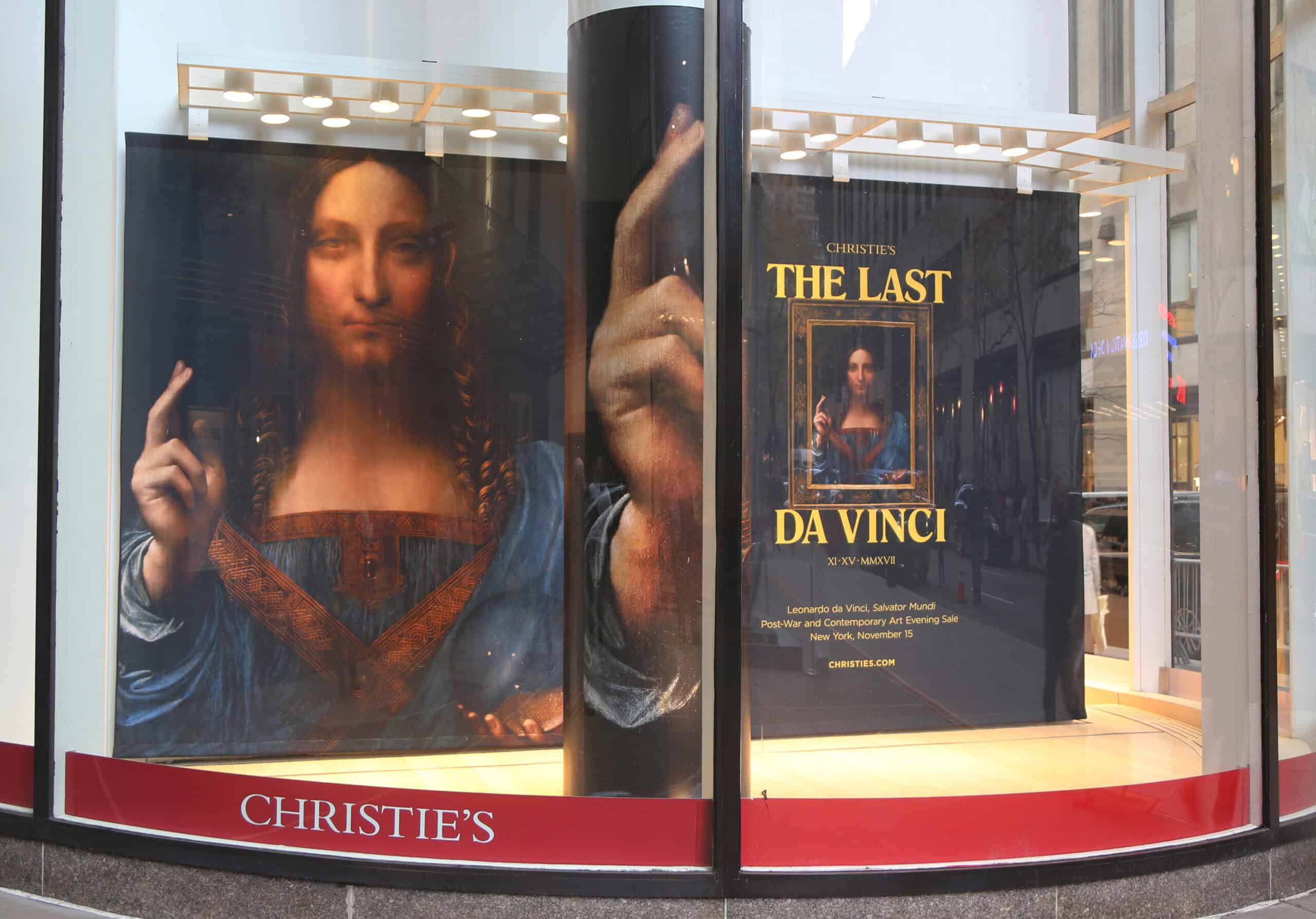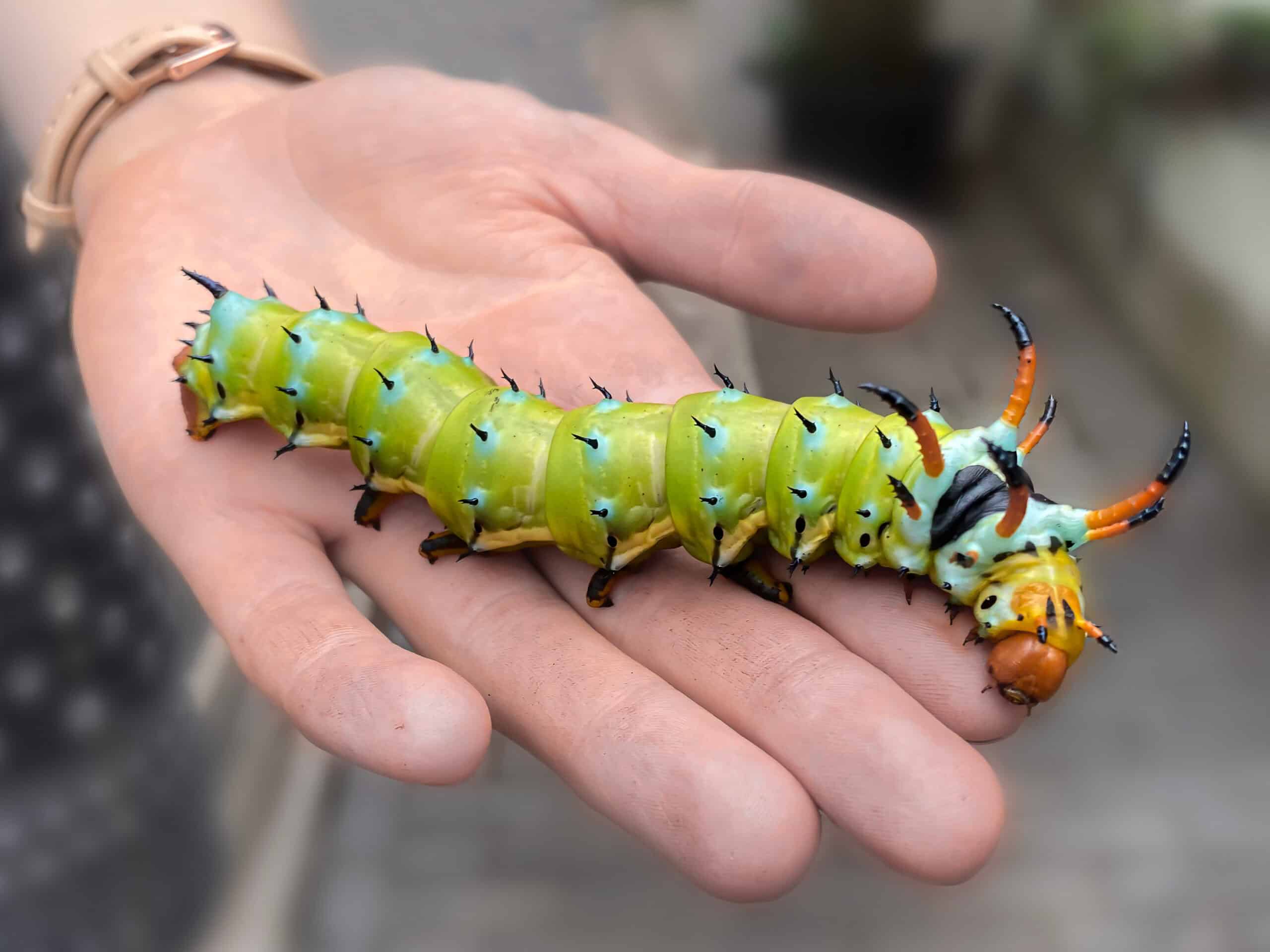Ancient civilizations left behind a wealth of fascinating artifacts, and among the most intriguing are their unique coins. These coins not only served as a medium of exchange but also reflected the artistry, culture, and economic power of their time. From the detailed engravings of the Athenian Owl Tetradrachm to the pioneering design of Lydia’s first electrum coin, each piece tells a story of its era. Delving into these ancient coins offers a glimpse into the past, revealing the complexities and achievements of long-lost civilizations. Here are 20 unique coins that provide a window into the ancient world.
Athenian Owl Tetradrachm
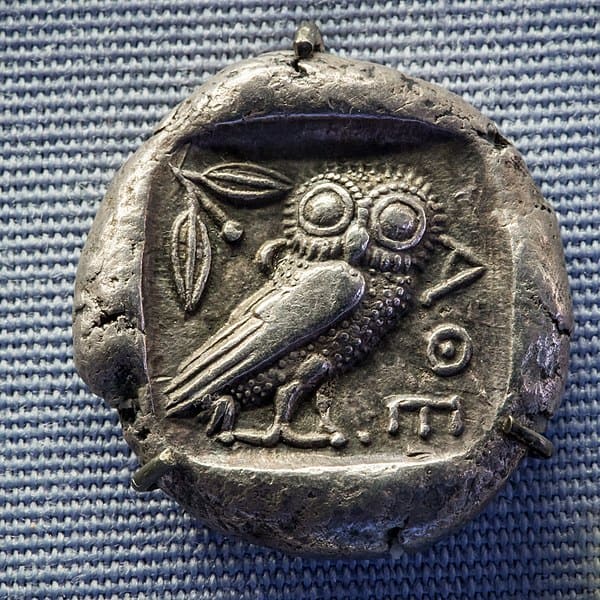
The Athenian Owl Tetradrachm, minted around 450 BCE, is one of the most iconic coins of ancient Greece. It features the goddess Athena on the obverse and an owl, symbolizing wisdom, on the reverse. This silver coin was widely used in trade throughout the ancient world, reflecting Athens’ economic and military power. The detailed artistry of the owl and the olive branch beside it is remarkable, showcasing the high level of craftsmanship. Collectors highly prize these coins for their historical significance and exquisite design.
Roman Denarius of Julius Caesar
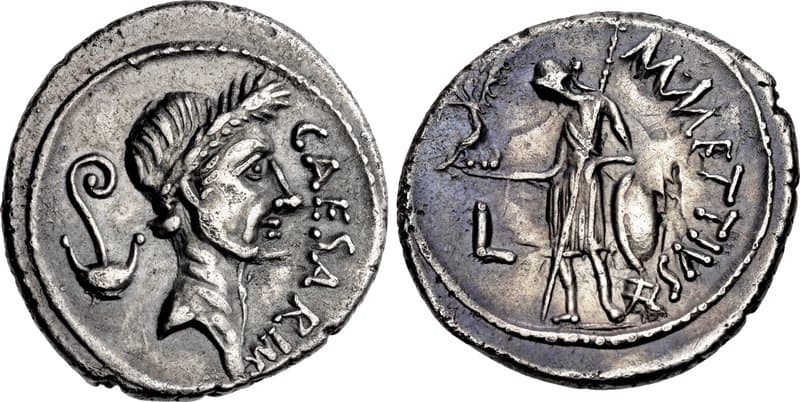
The Roman Denarius bearing the likeness of Julius Caesar was minted in 44 BCE, shortly before his assassination. This coin features a portrait of Caesar on the obverse, making it one of the earliest examples of a living person’s image on currency. On the reverse, it depicts Venus, the mythical ancestor of the Julian family. These coins were circulated widely throughout the Roman Empire, symbolizing Caesar’s immense influence. Their historical connection to a pivotal moment in Roman history makes them incredibly valuable to collectors.
Persian Daric
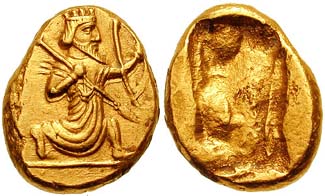
The Persian Daric, first issued by King Darius I around 500 BCE, was a gold coin that became synonymous with Persian wealth and power. It features the image of the king running with a bow and spear, symbolizing the military might of the Persian Empire. The Daric was widely accepted across the ancient world, facilitating trade from India to Greece. Its high gold content and consistent weight made it a trusted and valuable currency. Today, these coins are sought after for their historical and numismatic significance.
Chinese Ban Liang Coin
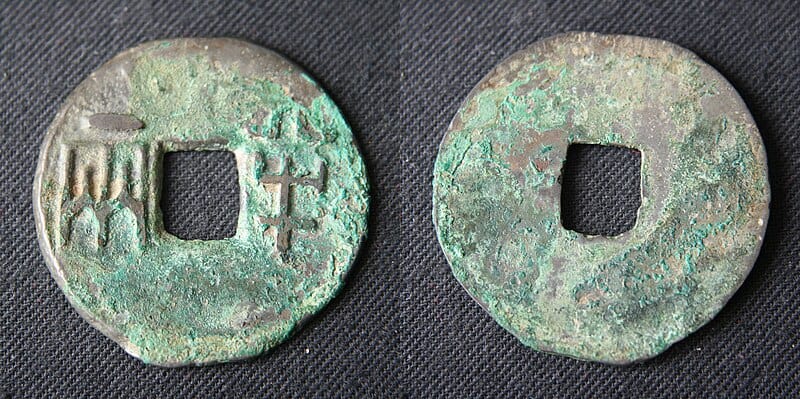
The Ban Liang coin, introduced during the Qin Dynasty around 210 BCE, is one of the earliest standardized coins in China. It is round with a square hole in the center, representing heaven and earth. This bronze coin played a crucial role in unifying the Chinese economy under Emperor Qin Shi Huang. The Ban Liang’s simple yet effective design influenced Chinese coinage for centuries. Collectors admire these coins for their historical importance and unique shape.
Carthaginian Shekel
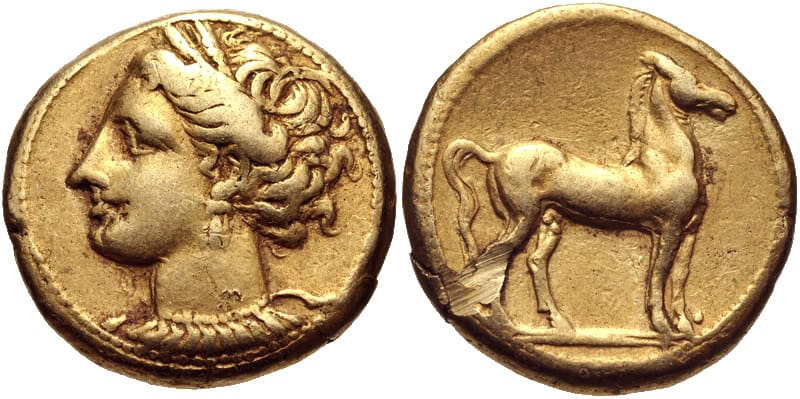
The Carthaginian Shekel, minted in the 4th century BCE, features a detailed image of the god Melqart on the obverse. On the reverse, it depicts a horse, symbolizing Carthage’s renowned cavalry. These silver coins were used extensively in trade across the Mediterranean, reflecting Carthage’s economic strength. The Shekel’s artistry and connection to the ancient city of Carthage make it a fascinating piece of history. Collectors value these coins for their rarity and historical context.
Macedonian Tetradrachm of Alexander the Great
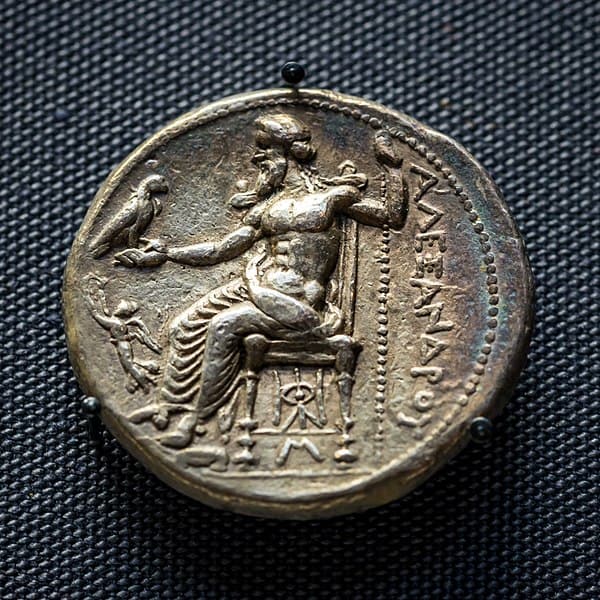
The Macedonian Tetradrachm of Alexander the Great, minted after 336 BCE, features a portrait of Hercules on the obverse. The reverse depicts Zeus seated on a throne, holding an eagle and a scepter. These silver coins were issued throughout Alexander’s vast empire, from Greece to Egypt and beyond. Their widespread circulation and fine craftsmanship make them highly desirable to numismatists. The Tetradrachms symbolize Alexander’s influence and the cultural diffusion of his era.
Lydia’s First Electrum Coin
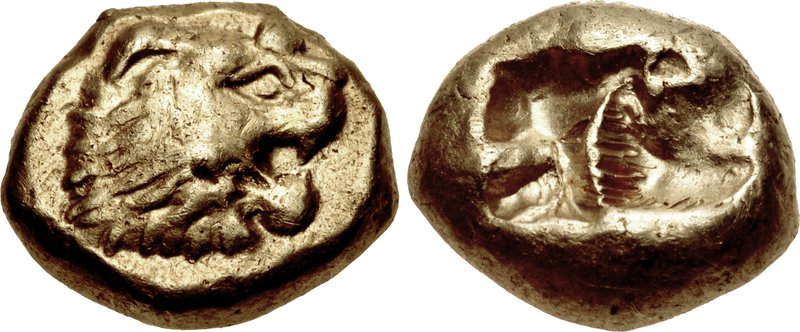
Lydia’s first electrum coin, minted around 600 BCE, is often considered the world’s first true coin. It features a simple punch mark, known as the “lion and bull” design, indicating its weight and value. These coins were made from a natural alloy of gold and silver, highlighting Lydia’s innovative approach to currency. Their creation marked the beginning of standardized coinage, revolutionizing trade and commerce. These early coins are prized for their pioneering role in monetary history.
Parthian Drachm
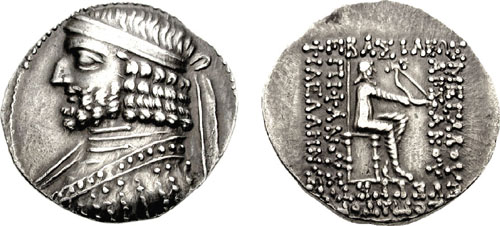
The Parthian Drachm, minted from the 3rd century BCE, features a portrait of the ruling king on the obverse. The reverse typically depicts an archer seated, symbolizing the Parthian military prowess. These silver coins were widely used across the Parthian Empire, which spanned from Iran to Mesopotamia. The Drachms are notable for their distinctive style and detailed engravings. Collectors find these coins fascinating for their artistic merit and historical context.
Byzantine Solidus
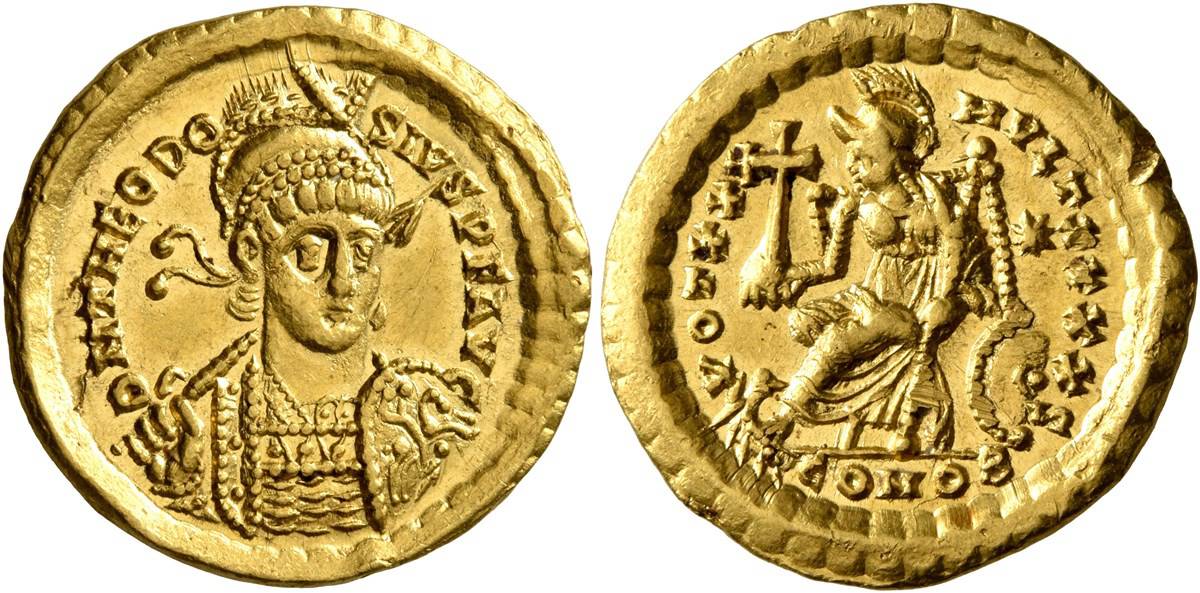
The Byzantine Solidus, first minted by Constantine the Great in 312 CE, became the standard gold coin of the Byzantine Empire. It features a portrait of the emperor on the obverse and various religious motifs on the reverse. The Solidus was known for its consistent weight and high gold content, maintaining its value over centuries. This coin played a critical role in the economic stability of the Byzantine Empire. Its historical significance and enduring design make it a valuable addition to any collection.
Sassanian Drachm
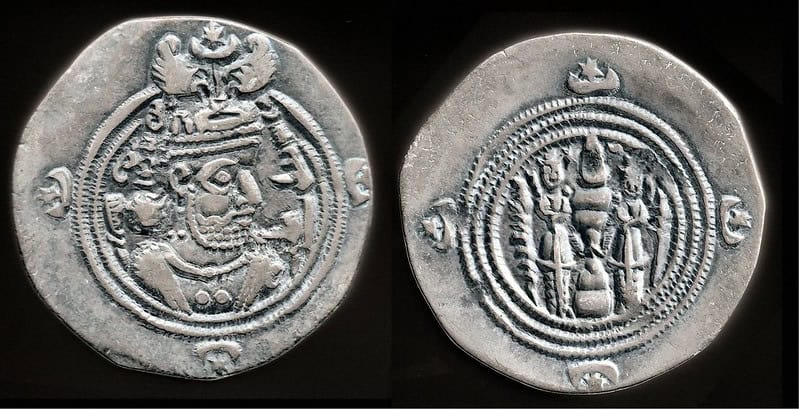
The Sassanian Drachm, minted from the 3rd to the 7th centuries CE, features a detailed portrait of the reigning monarch. The reverse often depicts a Zoroastrian fire altar, reflecting the religious beliefs of the Sassanian Empire. These silver coins were widely circulated, showcasing the empire’s economic strength and artistic achievements. The Drachms are admired for their intricate designs and historical relevance. Collectors value them for their connection to the ancient Persian culture.
Phoenician Shekel

The Phoenician Shekel, minted in the ancient city of Tyre around 126 BCE, is renowned for its purity and weight. It features the image of Melqart on the obverse and an eagle on the reverse. These silver coins were used extensively in trade, especially in the Mediterranean region. The Shekel’s high silver content and fine craftsmanship made it a preferred currency among merchants. Its association with the ancient Phoenician civilization adds to its numismatic appeal.
Egyptian Ptolemaic Tetradrachm
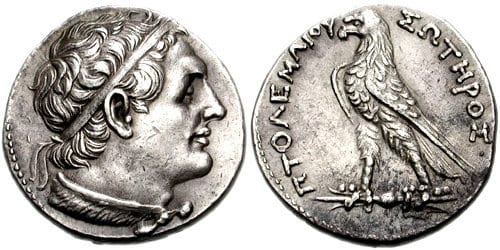
The Egyptian Ptolemaic Tetradrachm, minted during the reign of the Ptolemaic dynasty, features a portrait of the ruling pharaoh. The reverse typically depicts an eagle standing on a thunderbolt, symbolizing the power of the dynasty. These silver coins were used throughout the Ptolemaic Kingdom, which included Egypt and parts of the eastern Mediterranean. The Tetradrachms are known for their high artistic quality and historical significance. Collectors prize them for their detailed engravings and connection to ancient Egypt.
Kushan Gold Dinar

The Kushan Gold Dinar, minted by the Kushan Empire in the 1st to 3rd centuries CE, features a portrait of the emperor on the obverse. The reverse typically depicts a deity, reflecting the empire’s religious diversity. These gold coins were widely used in trade, showcasing the Kushan Empire’s wealth and cultural influence. The Dinars are notable for their fine craftsmanship and detailed imagery. Collectors value these coins for their historical and artistic significance.
Greek Stater of Corinth
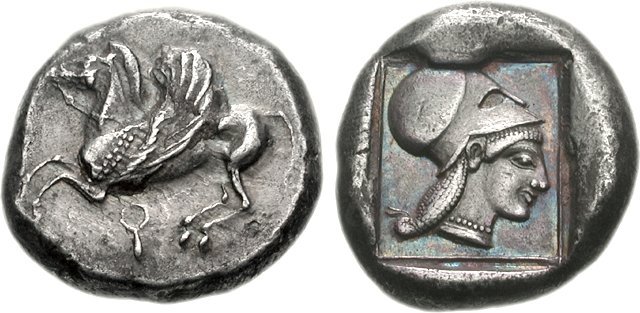
The Greek Stater of Corinth, minted around 400 BCE, features the winged horse Pegasus on the obverse. The reverse depicts the goddess Athena, symbolizing wisdom and warfare. These silver coins were used extensively in trade, reflecting Corinth’s economic power. The Stater’s intricate design and historical context make it a fascinating piece for numismatists. Its connection to Greek mythology and commerce adds to its collectible appeal.
Celtic Gold Stater
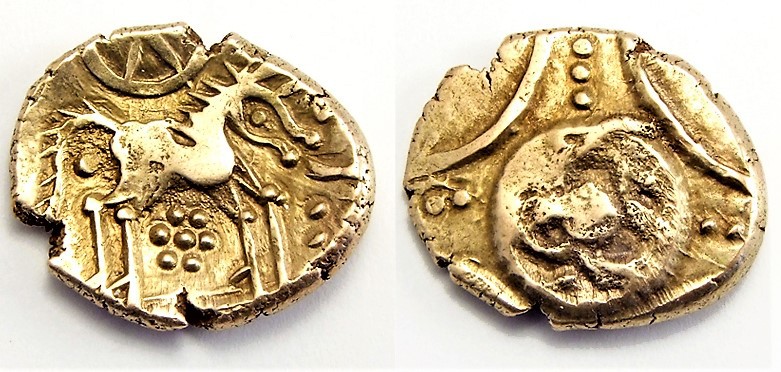
The Celtic Gold Stater, minted by various tribes in the ancient Celtic world, features a stylized horse on the obverse. The reverse often depicts abstract patterns and symbols, reflecting the artistic style of the Celts. These gold coins were used in trade and as offerings, showcasing the wealth and craftsmanship of the Celtic tribes. The Stater’s unique design and cultural significance make it a prized collectible. Collectors admire these coins for their beauty and historical importance.
Mauryan Punch-Marked Coin
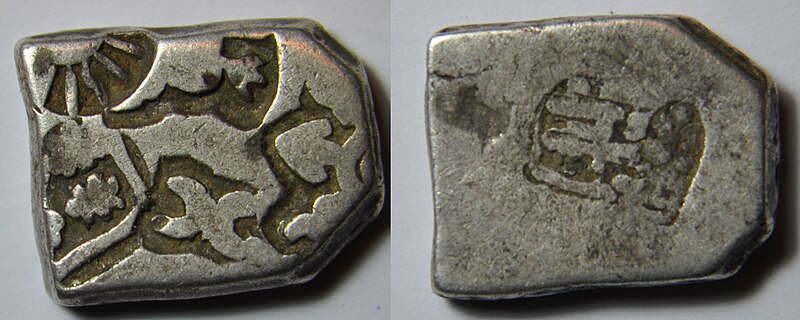
The Mauryan Punch-Marked Coin, minted in ancient India around the 3rd century BCE, features various symbols punched into the metal. These symbols, representing animals, trees, and geometric patterns, indicated the coin’s authenticity and value. These silver coins played a crucial role in the Mauryan Empire’s economy, facilitating trade across the Indian subcontinent. The punch-marked coins are notable for their simplicity and historical context. Collectors value them for their connection to one of India’s earliest empires.
Nabataean Silver Drachm
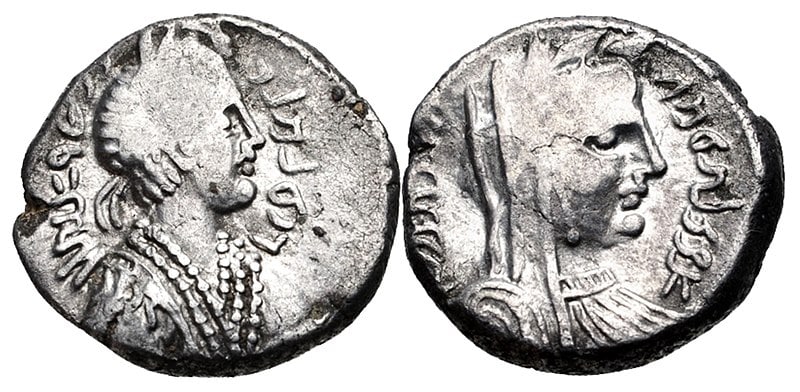
The Nabataean Silver Drachm, minted in the ancient kingdom of Nabataea around the 1st century BCE, features a portrait of the king on the obverse. The reverse often depicts a deity or symbolic figure, reflecting the Nabataean’s religious beliefs. These silver coins were used extensively in trade, particularly along the Incense Route. The Drachms are admired for their detailed engravings and historical significance. Collectors prize them for their connection to the ancient Nabataean civilization.
Seleucid Tetradrachm
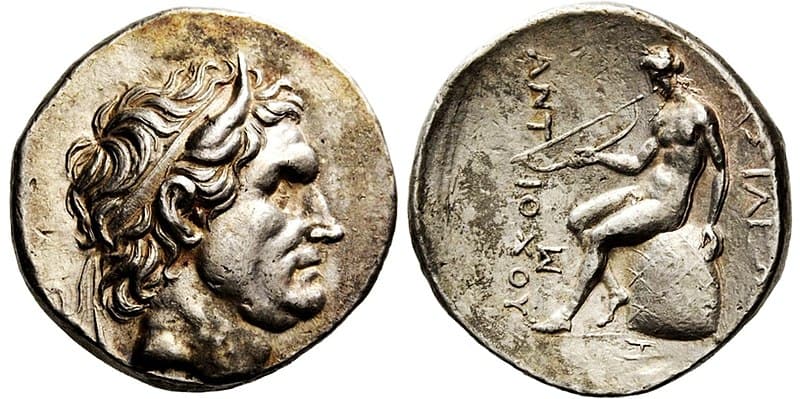
The Seleucid Tetradrachm, minted by the Seleucid Empire around the 2nd century BCE, features a portrait of the king on the obverse. The reverse typically depicts a deity or mythological figure, symbolizing the empire’s cultural heritage. These silver coins were used throughout the vast Seleucid Empire, reflecting its economic power. The Tetradrachms are notable for their high artistic quality and historical context. Collectors value them for their detailed designs and connection to the Hellenistic world.
Aksumite Gold Coin
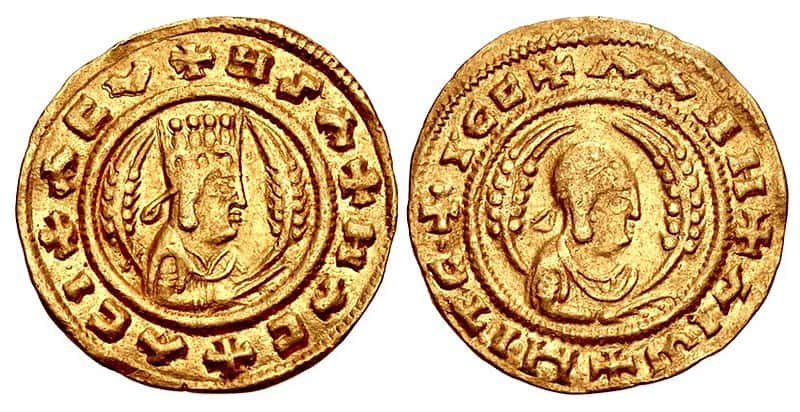
The Aksumite Gold Coin, minted by the ancient Kingdom of Aksum around the 3rd to 7th centuries CE, features a portrait of the king on the obverse. The reverse often depicts a cross or other religious symbols, reflecting the kingdom’s Christian faith. These gold coins were used in trade across the Red Sea and beyond, showcasing Aksum’s wealth and influence. The coins are admired for their fine craftsmanship and historical significance. Collectors prize them for their connection to one of Africa’s great ancient civilizations.
Etruscan Gold Coin
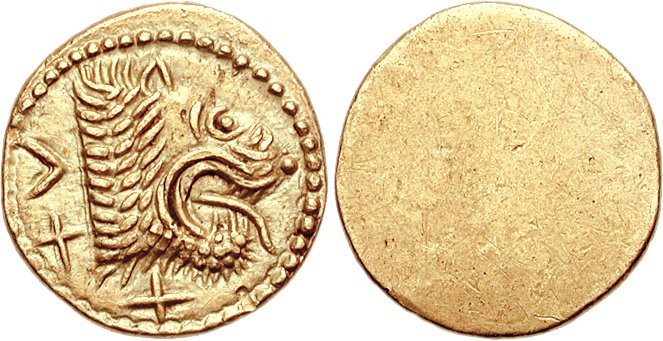
The Etruscan Gold Coin, minted by the ancient Etruscan civilization around the 5th century BCE, features a stylized image of a deity on the obverse. The reverse typically depicts an animal or symbolic figure, reflecting the Etruscan’s religious beliefs and artistic style. These gold coins were used in trade and as offerings, showcasing the wealth and craftsmanship of the Etruscan people. The coins are notable for their intricate designs and historical context. Collectors value them for their beauty and connection to the ancient Etruscan civilization.
This article originally appeared on Rarest.org.
More From Rarest.Org
1960 Jefferson Nickel Value Guide
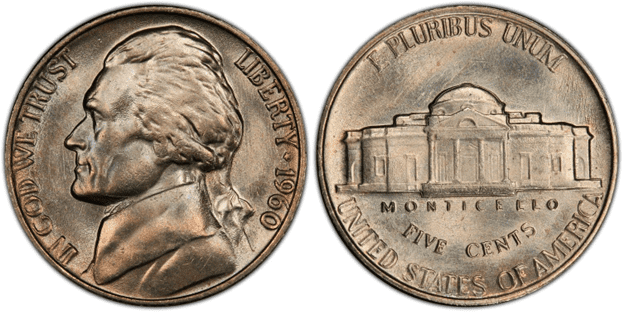
The 1960 Jefferson nickel is made of 75% copper and 25% nickel. It’s quite interesting to note that from mid-1942 to 1945, nickel was made of 56% copper, 25% silver, and 9% manganese. They were called “Wartime Nickels.” Read more.
Historical memorabilia often holds immense value, not just in terms of money but also due to its cultural, historical, and emotional significance. From rare paintings to iconic sports gear, these items capture moments in history that continue to fascinate and inspire. Read more.
In the insect world, survival often hinges on remarkable defense strategies. From mimicry to chemical warfare, these tiny creatures have evolved unique ways to protect themselves. Here are some incredible insects and their extraordinary defense mechanisms. Read more.

